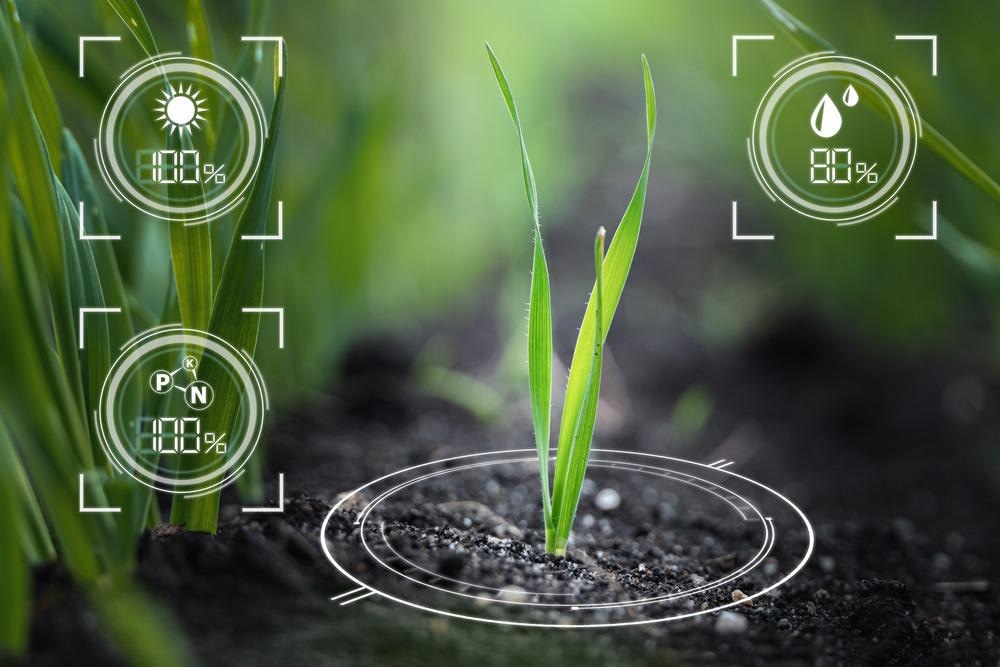Earth Day is an annual celebration that takes place every year on April 22 to honor the environmental movement’s achievements and raise awareness of the need to protect the planet and its natural resources for the future. This year, AZoRobotics is commemorating the event by exploring five ways in which artificial intelligence (AI) helps our efforts to protect the earth.

AI is the application of algorithms – logical sequences of mathematical instructions for computers to follow – to make computers act in a way that appears intelligent.
Modern computers performing millions of mathematical functions can simultaneously learn from the data they interact with and can even adapt their behaviors to respond to this new knowledge. This is known as machine learning (ML), and it is one example of AI.
Another example is artificial neural networks (ANNs), AI systems that mimic the networked intelligence of synapses in the brain to compute information more quickly and naturalistically.
Semantic systems are based on language. This simulates intelligence by instructing computers to mimic human speech or written communication, offering original responses and suggestions.
AI is an advanced area of computer science that is only just beginning to offer wide applications in the last few decades. However, it is rapidly progressing both in terms of its capability and accessibility. Today, researchers and general audiences without expert knowledge of computing applications can use “plug-in” AI packages on their own datasets and projects.
Earth Day 1970–2022: What's Changed? #datavisualization
Earth Day 1970–2022: What's Changed? Video Credit: American Museum of Natural History/YouTube.com
1.AI to Forecast Freak Weather Events
Local forecasting uses supercomputers and trained local practitioners to understand and process the complex physics involved in extreme weather events.
Technology startup ClimateAi is developing a machine learning program to correct biases in global weather models and provide accurate local forecasts without the traditional and expensive requirements for supercomputers and experts.
The AI uses generative adversarial networks (GANs) that have been “trained” on global weather forecasts -that is, fed those datasets) to correct for biases in current weather models. This increases the resolution for global forecasting to make it just as accurate as a local forecast without the requirement for local forecasting.
This places the accuracy of local weather forecasting capabilities into the hands of individuals, organizations, and low-income governments. In turn, this could help communities around the world to better protect themselves against the extreme weather events that are increasing due to climate change.
2.AI and the Circular Economy
The plastic waste problem is well documented – we are making more and more plastic products, throwing them away, and then letting them sit in landfill sites for potentially thousands of years while they slowly degrade.
Approximately two-fifths of plastic is used for packaging, and product packaging has therefore become a key target for proponents of the circular economy model.
This economic framework seeks to “close loops” in a linear production system that extracts resources and manufactures products destined to return to the environment as waste. This is achieved with better product and packaging design to make products long-lasting, reusable, and easy to recycle and return to production streams.
The impact of product design on sustainability is profound: over 80% of a product’s environmental impact is set at the design stage.
AI has a key role to play here. It is already applied for product development because it can endlessly iterate and test different physical designs, component choices, and material selections to optimize performance.

Image Credit: Leonid Sorokin/Shutterstock.com
3. AI and Agriculture
With a growing human population and a global food system that is already working at its limits, sustainable agriculture is key to overcoming today's environmental challenges.
AI technologies like machine learning present smart, connected agricultural systems, combining advances in robotics and hydroponics to make food faster, more efficiently, and with fewer resources.
Introducing the Internet of Things (IoT) to agriculture with connected networks of sensors and automation technology and then applying AI to optimize these connected systems is predicted to revolutionize the industry in the next few years.
4. AI and Renewable Energy
AI will continue to be used in the renewable energy industry as we make the shift away from fossil fuels.
As mentioned above, AI is used to improve weather forecasting. This enables solar and wind energy providers to plan and optimize their operations better.
AI is also being used for product development to design the most efficient, high-performing wind turbines, solar panels, and geothermal energy solutions.
5. AI and Optimization
As more parts of our economy – energy systems, production cycles, infrastructure networks – become connected in the IoT, AI can greatly impact our efforts to protect the planet.
This is by optimizing all of those systems for efficiency, thereby reducing their demand for energy and resources.
A key example of this happening is in national electric grid networks. By optimizing electric grids, automating grid operations in response to changing conditions, and continuing to learn from millions of data points in real-time, AI can dramatically reduce inefficiencies in the system and save energy.
With an IoT connecting all outlet points in the grid system as well, this optimization can even be extended to the demand side of the energy network – with AI in the driving seat to protect the planet from our energy needs.
References and Further Reading
Ahlefeld, R. (2021). Leveraging Artificial Intelligence to Reduce Plastic Waste. [Online] Machine Design. Available at: https://www.machinedesign.com/materials/article/21164797/leveraging-artificial-intelligence-to-reduce-plastic-waste
Earth Day. [Online] Available at: https://www.earthday.org/
Nichols, G. (2022). How this AI predicts extreme local weather events. [Online] ZDNet. Available at: https://www.zdnet.com/article/how-ai-predicts-extreme-local-weather-events/
Disclaimer: The views expressed here are those of the author expressed in their private capacity and do not necessarily represent the views of AZoM.com Limited T/A AZoNetwork the owner and operator of this website. This disclaimer forms part of the Terms and conditions of use of this website.